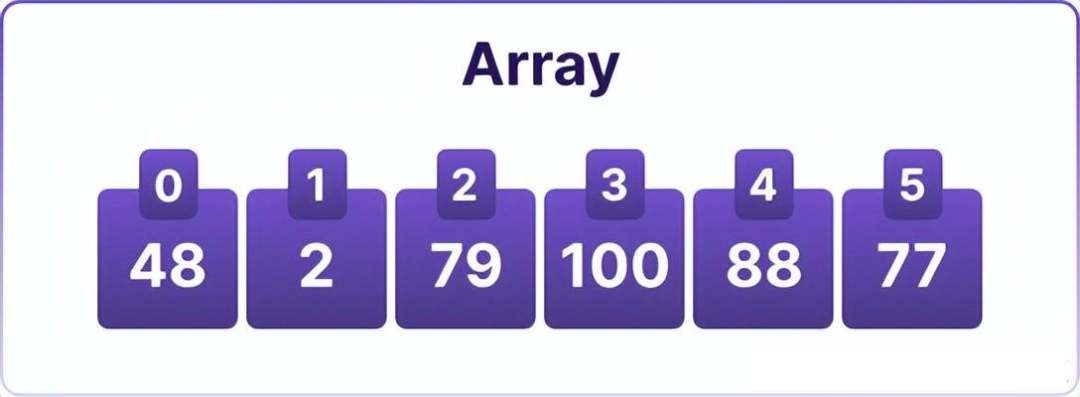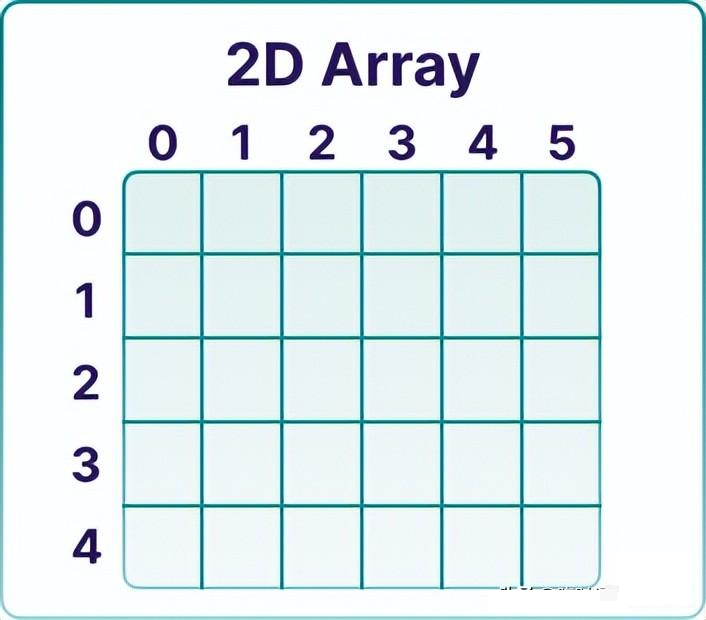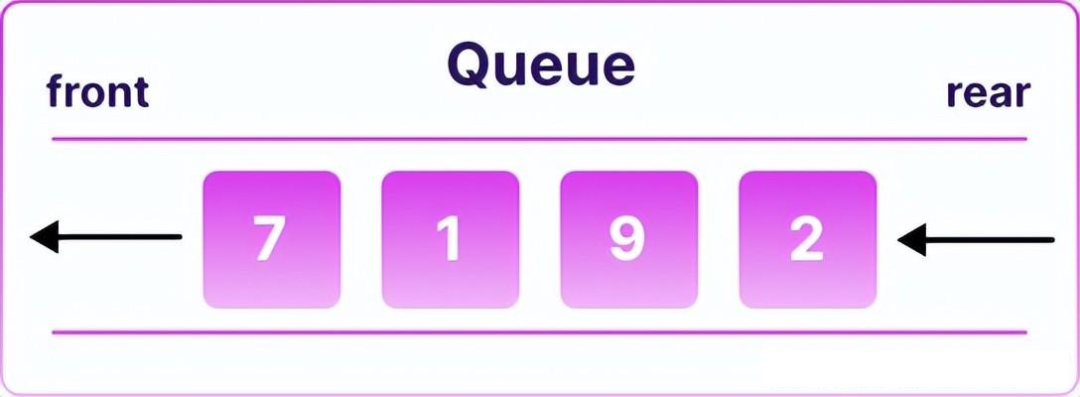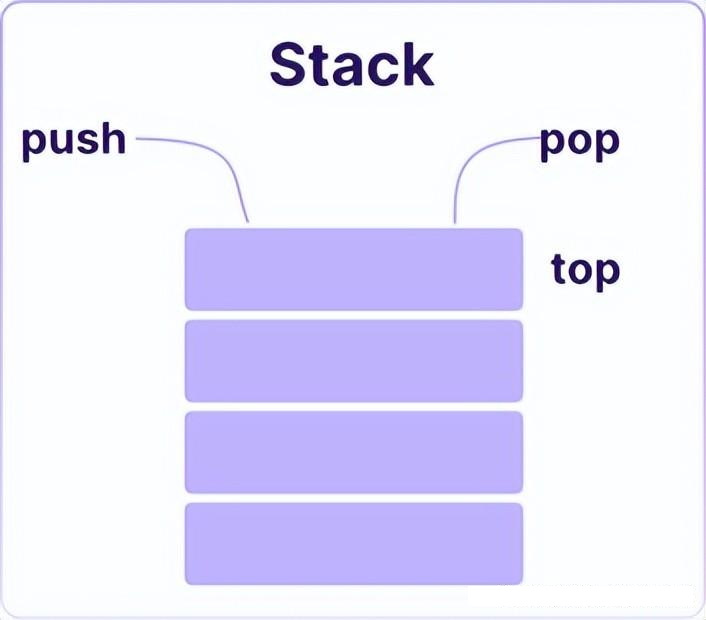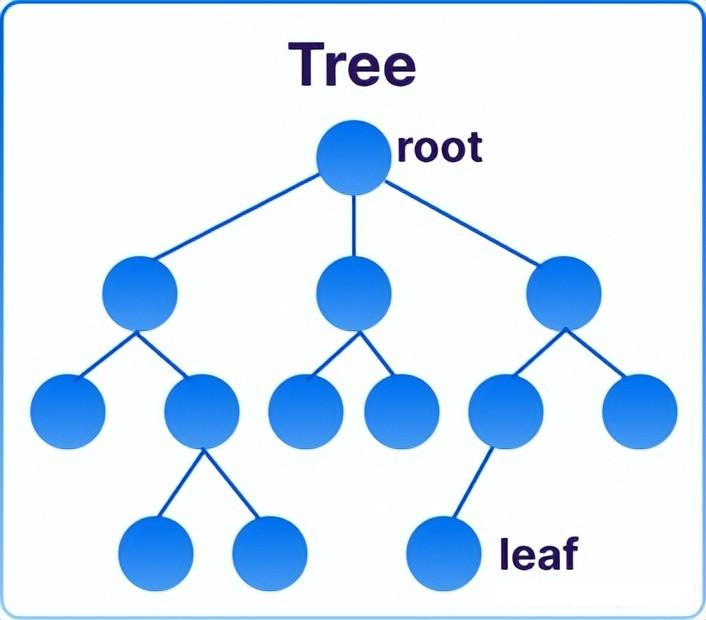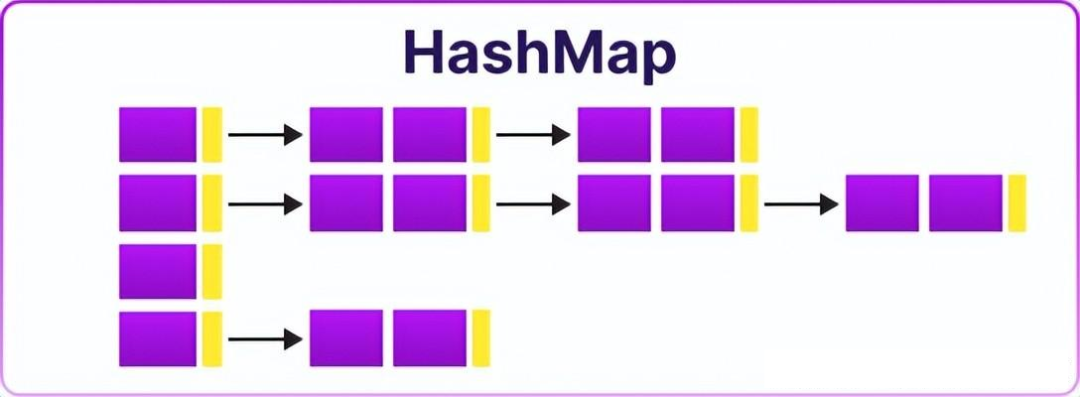来源 | 吃时间的虫子TK
Software engineers typically need to determine which data structures and algorithms to use based on specific application business logic. It can be said that suitable data structures and algorithms are the cornerstone of stable business software operation.
If you are a software engineer, whether you are preparing for coding interviews, optimizing your code, or dealing with complex applications, understanding how to use and implement data structures is crucial.
In this article, we will briefly outline and recommend data structures that embedded software engineers should learn and master. These structures are not only common in interviews but are also essential for writing efficient and scalable code in practical applications.
An array is one of the most basic and commonly used data structures. It stores elements in contiguous memory blocks and allows for quick access through indexing. Each element in the array is located at an index number, which provides direct access to retrieve or update an element.
Scenario: Arrays are ideal for storing lists of elements that require constant time access and modification. However, resizing an array can be costly, and inserting or deleting elements from the middle of the array requires moving elements.
Example: A list of numbers stored in an array [48, 2, 79, 100, 88, 77] allows you to quickly access any value using its index, such as array[2] to access 79.
2. 2D Array
A 2D array, also known as a matrix, is an array of arrays. It is used to represent data in a grid format, with rows and columns.
Scenario: Common applications of 2D arrays include representing images, game boards, and matrices in mathematical operations.
3. Queue
A queue is a first-in-first-out (FIFO) data structure. In a queue, elements are added at the tail and removed from the head. It is very suitable for scenarios where tasks need to be processed in the order they arrive.
Scenario: Queues are useful in scenarios such as task scheduling, handling requests in servers, or breadth-first search in graphs.
Example: In a task scheduler, tasks are added to the back of the queue, and the scheduler processes them from the front.
4. Linked List
A linked list is a linear data structure where each element (called a node) contains a value and a reference (or pointer) to the next node in the sequence. Unlike arrays, linked lists do not require contiguous memory and can grow or shrink dynamically.
Scenario: Linked lists are useful in scenarios where you expect frequent insertions or deletions, especially in the middle of a list.
Example: Imagine a music playlist where you can dynamically add or remove songs, and each song is linked to the next.
5. Stack
A stack is a last-in-first-out (LIFO) structure where elements are added and removed from the top. It is like a stack of books, where you can only take or add from the top.
Scenario: Stacks are used in scenarios such as undo operations in text editors, expression parsing, or managing function calls in programming (call stack).
Example: When you click “undo” in a text editor, the last operation is removed from the operation stack.
6. Tree
A tree is a hierarchical structure composed of nodes. Each node has a value and may have child nodes, forming branches. The topmost node is the root node, and nodes without children are leaf nodes.
Scenario: Trees are useful for representing hierarchical relationships, such as file directories, organizational charts, etc.
Example: A tree can represent a family hierarchy, where the root of the tree is the ancestor, and the branches lead to descendants.
7. HashMap
A hash map (or hash table) is a data structure that stores key-value pairs. It uses a hash function to compute an index into an array of buckets, from which the desired value can be found.
Scenario: Hash maps are excellent for quick lookups by key, such as in caching, database indexing, or counting occurrences of elements.
Example: Imagine storing a dictionary where words are keys, and their definitions are values. A hash map allows you to quickly find the definition of any word.
The autumn recruitment has ended, so if everyone does not prepare adequately, it will be difficult to find a good job in the spring recruitment.
Here’s a job-seeking gift package for everyone, so you can prepare for the spring recruitment and find a good job!

